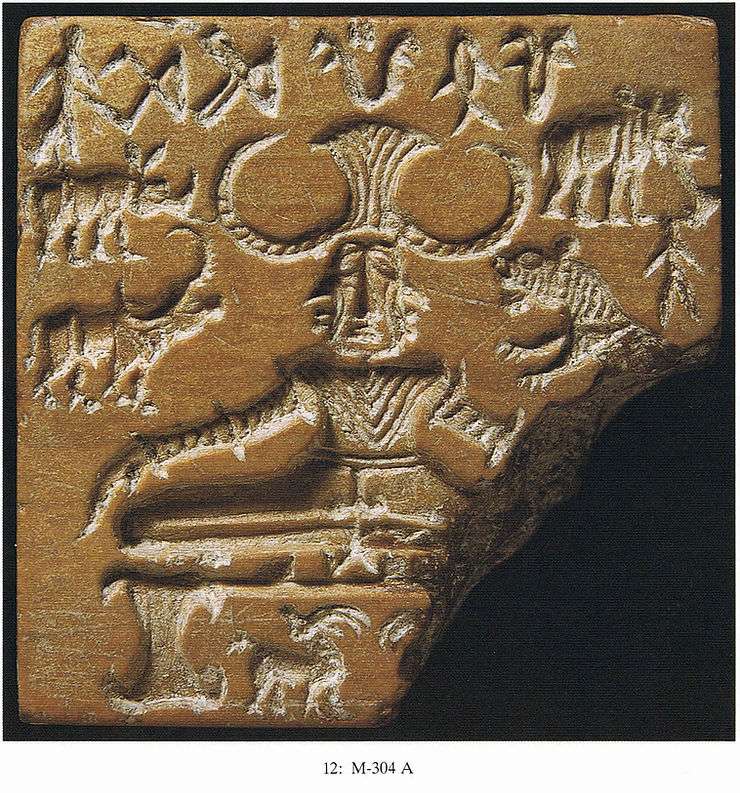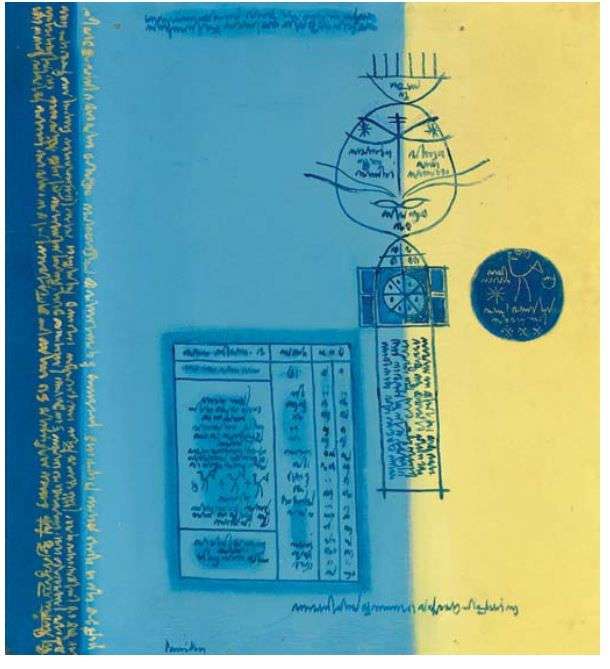
From the famous seals of Harappa to the colloquial brilliance of Madhubani paintings, Indian art vibrantly explodes with symbolism. A poetry of signs formulates itself, as the symbolism of an artwork is pervasive over time and gains immense significance.
While the use of language and symbols in art is an age-old tradition, it remains prominent even today with regard to Indian art. The mesmerising works of K. C. S Paniker, the playful figuration of Arpita Singh and the powerful style of Anita Dube come to mind with when we think about a more contemporary take.

1. K C S Paniker
As a fantastical and metaphysical painter, it is no surprise that Paniker took to the realm of symbols, introducing us to a refreshingly new visual language. Using mathematical equations and geometric divisions, his work transforms into a spiritual experience. The complexity of the symbols allows the audience to feel both lost and found in the composition. While we untangle the words and symbols, our gaze rests against the vibrant planes of colour.
The artist simply invites the viewer to lose themselves in the obscurity of the writing and create a meaning of their own. While the viewer does follow the simplicity of the divided geometric planes, the symbols included in it dance between being recognizable and being obscure.

2. Arpita Singh
Given that symbols in art are often enigmatic, Arpita Singh takes this to the next level by inventing her own visual symbolism and language. Alert to her surroundings, she utilizes a striking set of imagery to create unique works. A vivid palette and gentle resonance graces the visual plane as the artist weaves together this innovative visual language.
Read Signs Carefully holds both familiar and unfamiliar symbols, placed against a pretty, gradient background. With the work transforming from a deep pink to an off-white tone, the viewer is guided from the bottom of the canvas to the top. The letters and numbers are playful, and hint at the comparison to hieroglyphics while retaining the artist’s signature.
Radiant powder blues and the uneven frame around the composition simply add to this, inducing a child-like wonder within the complexity. There is an elegance to the symbolism that translates through both the palette and Arpita’s technique.

3. Anita Dube
Speaking of elegance while adding an edge to a visual, the works of Anita Dube come into focus as Silence coveys its enigma through layered letters. The paradox in the title automatically hints at the context, where even in silence there are words used to convey it. The overlapping letters and sentences are disorienting as the audience tries to uncover the symbolism in the work.
This particular silence is made from copper wire covered with velvet, creating a nebulous effect while softening the appearance of the wire. Almost writing itself into existence, the silence in this case remains untraceable; it is both lost and found on the same plane.
The conception of the work was at a time when the artist went through a very difficult and emotional upheaval. This led to the use of velvet as a covering for hardy materials, as though softening the harsh emotions she was experiencing. Conveying how society often sheaths its reality in a gentle illusion, Anita reveals this aspect to us through her own symbolism.
We do observe a fantastic range of genre in Indian art now, as seen in the works above as well as the transitions in Indian art throughout history. It is apparent that each artist conveys multi-dimensional aspects of symbolism while exploring their respective signatures. The strength of their visual language, choice of tone and complexity of the elements are what truly bring symbolism into a contemporary context while remaining true to its ancient roots.
There is an invisible and unheard conversation that takes place between a writer and their experiences, when we write and share it with the world, we are sharing a piece of wonder!
Let’s keep writing, let’s keep telling stories!
Share your stories about art, culture, design, architecture, and all things art with us at our Writer’s Corner.




